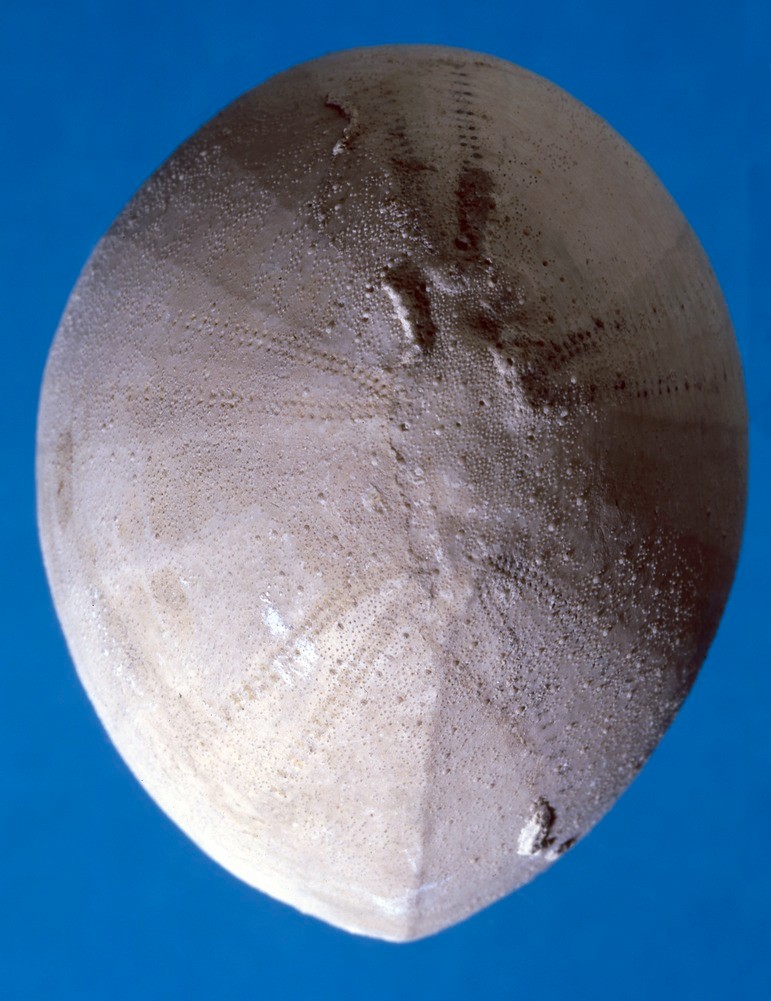| P number: | P550268 |
|---|---|
| Caption: | Echinocorys scutata, a fossil echinoid. |
| Description: | Echinocorys first appeared in late Cretaceous times (during the Turonian), about 90 million years ago. It lived through the mass extinction at the close of the Cretaceous, but became extinct very shortly afterwards, geologically speaking, during the Danian (about 60-65 million years ago). Echinocorys scutata lived during the late Cretaceous (65 to 88 million years ago), and is found in Chalk in southern England. Echinocorys scutata has a medium to large body (test), shaped in the form of an inflated oval cone. The five groups of perforated plates that make up the ambulacra, radiate from the summit of the cone, but they are not petal-shaped as they are in some echinoids. Both the mouth and the anus are on the underside of the test. Echinoids (sea urchins) have lived in marine habitats since the Ordovician times, about 450 million years ago. They still live today, inhabiting many shallow, near shore seas around the world. As fossil echinoids resemble living species, we have an idea how they must have lived. They had spines which are used for protection. Some species protected themselves from carnivores by having poison-tipped spines while others had large, unpalatable solid spines. Echinoids burrowed into the sand or crawled over the sea floor on their tubed feet, which extended from the paired pores on the star-like or petal-like areas (the ambulacra). They grazed and scavenging algae and plants or ate small particles in the sandy substrate. |
| Photographer: | Unknown |
| Copyright statement: | Unknown |
| Orientation: | Portrait |
| Size: | 411.35 KB; 771 x 1001 pixels; 65 x 85 mm (print at 300 DPI); 204 x 265 mm (screen at 96 DPI); |
| Average Rating: | Not yet rated |
| Categories: | Best of BGS Images/ Fossils |
Reviews
There is currently no feedback

